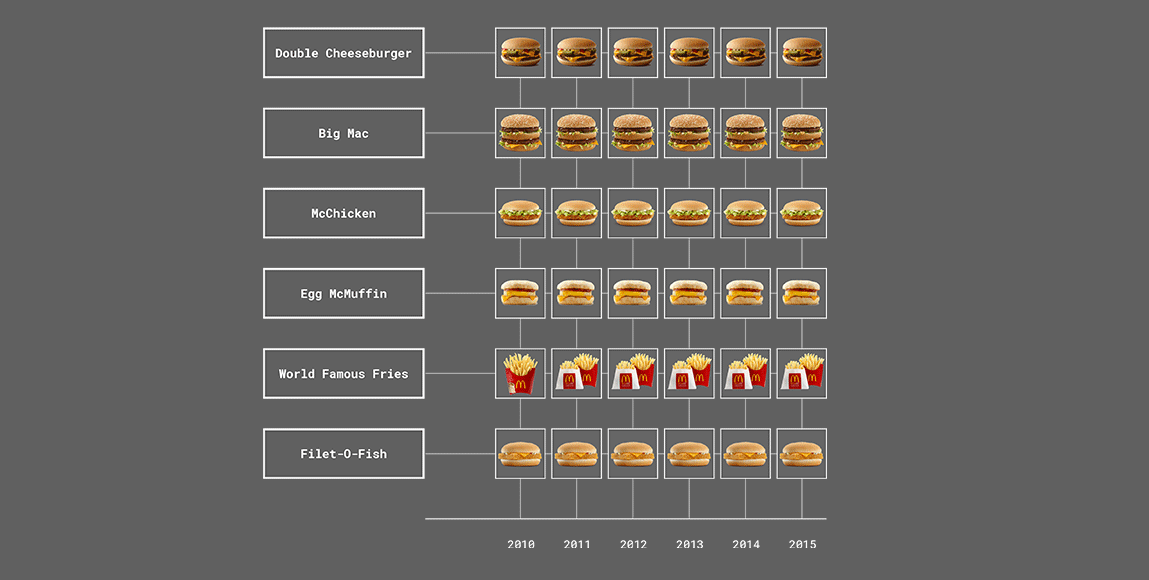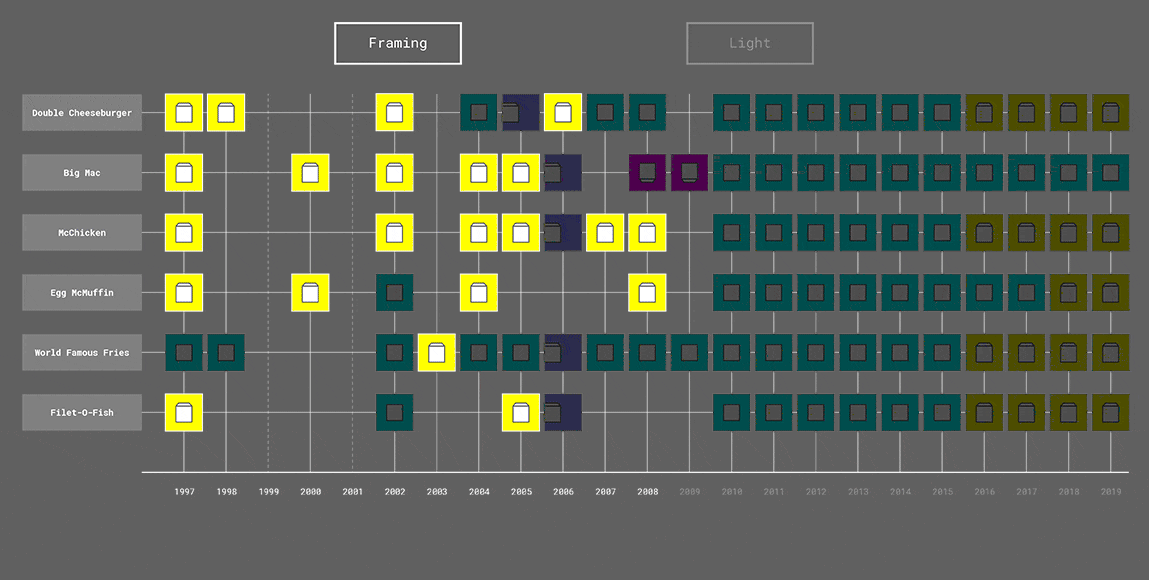McDonald's, the world's most popular fast food chain, openly claims to falsify photos of its products in the commercial sphere. The purpose of this practice is to create a visual imaginary full of dishes that are increasingly appealing to the consumer, aimed to fill the lack of final plating, due to the speed of the typical fast food service. However, customers are often not aware of this strategy and are encouraged to buy products looking at their mouth-watering representations, thinking that they faithfully reflect reality.
Main Findings
Analysing the dominant colours of each photo over the course of thirty years, it emerges that from 2010 to 2015 the level of saturation has gradually weakened. In particular, there is an increasingly neutral and natural palette that seeks to make the ingredients represented more authentic and less artificial.

From 2010 to 2015 the products are presented with images without any kind of background, typical of catalogue representations. This leads to the decontextualization of food, in order to give the user the opportunity to imagine the ideal place to eat it.

A greater naturalness of food is progressively achieved thanks to the change of framing and lights. Until 2010, a more dramatic light with a high-angle frame makes the composition much more theatrical, while in the following years a natural and diffused light together with a frontal frame make the scene much more realistic.

Between 1997 and the early 2000s still life images are set in different contexts, but from 2016 to 2019 there is a progressive ennoblement of food with the use of marble backgrounds that recall a professional kitchen.

The French fries are represented initially in a set and unrealistic way. As the years go by, they take on a false naturalness thanks to a careful and apparently random positioning.

Protocol
